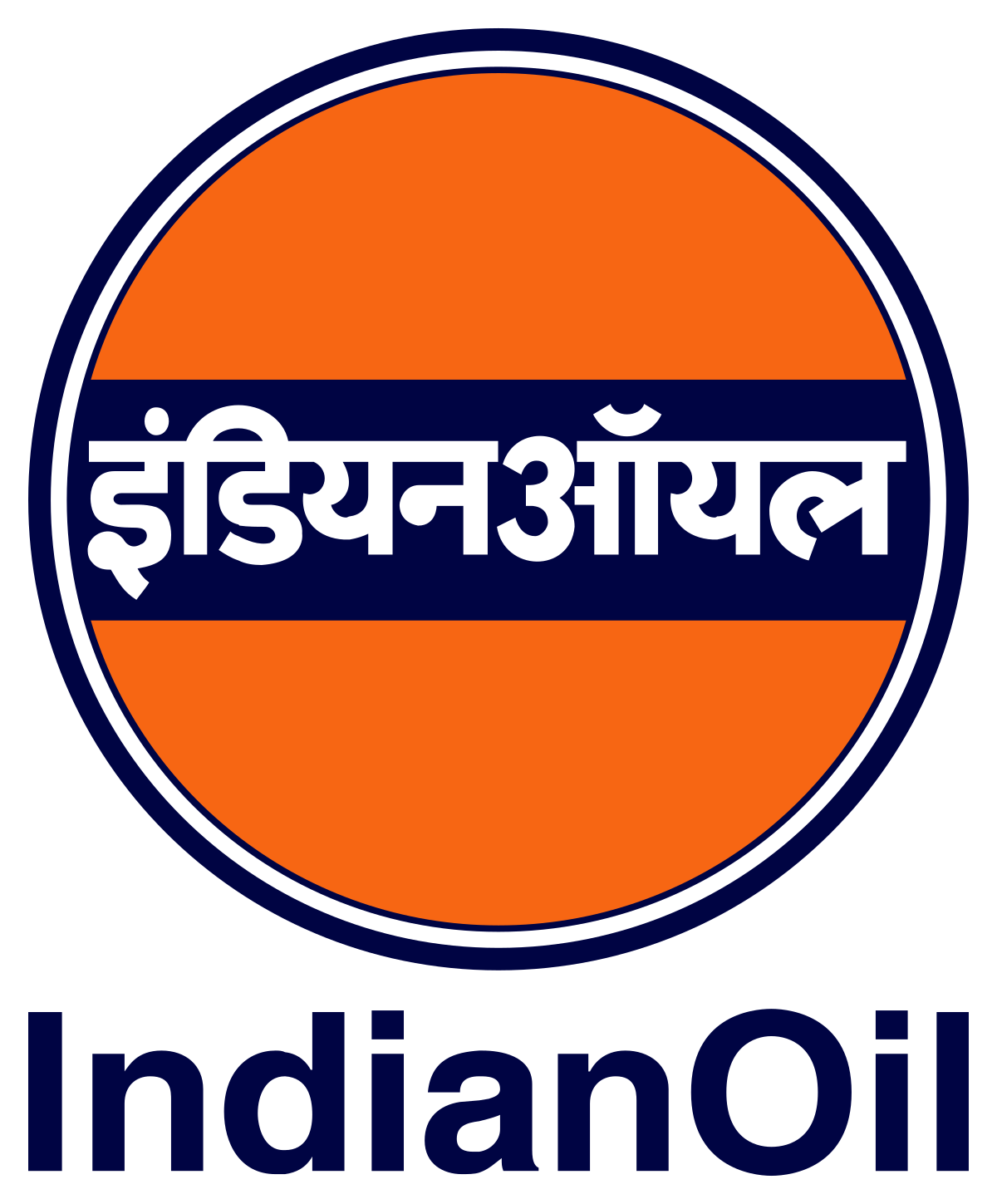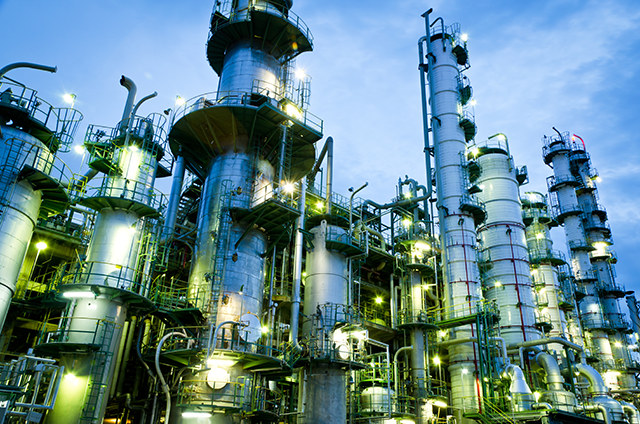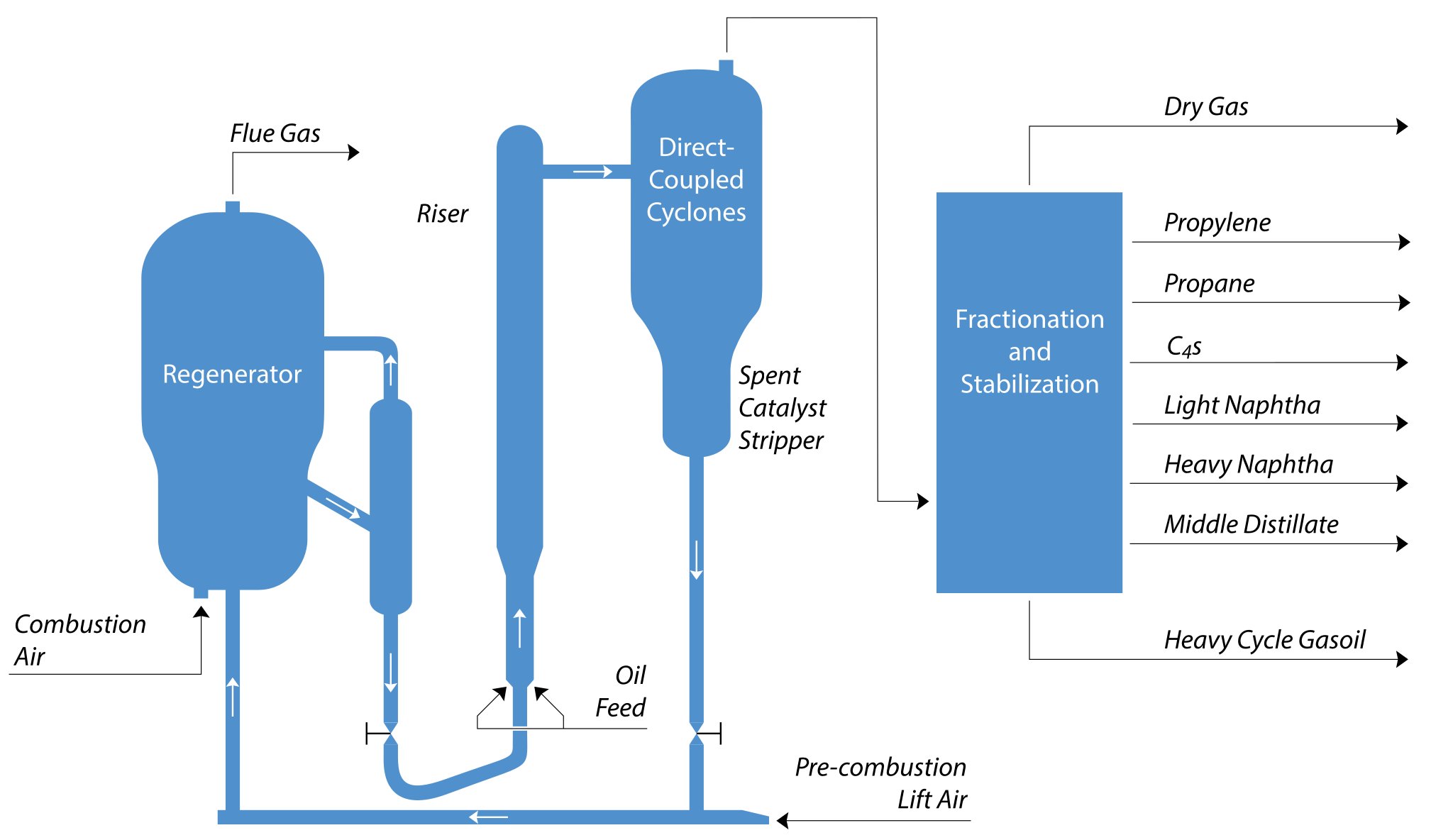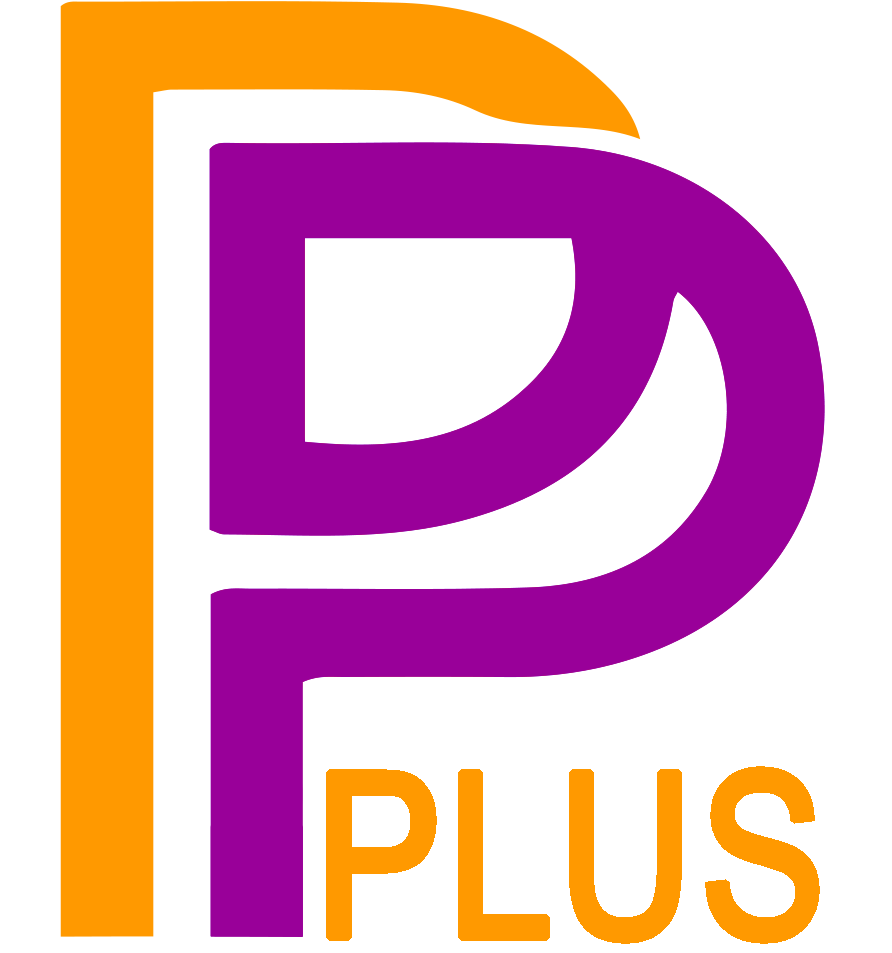Process Summary
The INDMAX process is a FCC technology for converting heavy feeds, including residue, to light olefins[1], combining the proprietary Indmax catalyst and process concepts developed by Indian Oil Corporation Limited (IOCL), India[2,3], with the FCC technology, design features and know-how of Lummus Technology[4].
The INDMAX process employs circulating fluidized bed Riser reactor - (catalyst) Stripper - (catalyst) Regenerator configuration similar to conventional FCC technology with single-stage full combustion Regenerator system[3].
Salient Features and Benefits of INDMAX Process
- Uses a proprietary catalyst formulation that is having high metal tolerance and high selective in cracking molecules of different shapes and sizes to yield high quantities of light olefins and lower dry gas yields[3,5].
- Capable of handling a wide range of feedstocks[3].
- High conversion and high heat balance is achieved though high efficiency hardware components such as Micro-JetTM Feed injector, ModGrip@ stripper internal, Direct-coupled cyclone separator, MSO™ air distributor, etc[3].
- The hardware features offer advantages in terms of low delta coke (higher catalyst-to-oil ratio) and lower dry gas production even with high Conradson Carbon Content (CCR) feeds. There is no need for a catalyst cooler or carbon monoxide (CO) boiler on the regenerator vessel for feeds with CCR content as high as 6.0 wt%[4].
- It is designed for and operated at Indmax process conditions: riser reactor temperature from 560° to 600°C, catalyst-to-oil ratio from 12 to 20, and lower hydrocarbon partial pressure compared to conventional FCC operations[6].
- Typically, the INDMAX FCC process uses only short-contact-time riser cracking, operating in different modes to maximize propylene yield or gasoline yield depending on refiner's objective, or produce combinations such as propylene plus ethylene or propylene plus gasoline[3,6].
- Gasoline product is having a high Octane number (RON > 95); extraction of toluene and styrene helps improve refining margin[3].
Light Olefins Yield
The INDMAX FCC unit selectively produces propylene and other light olefins with very high feedstock conversion: up to 45% of the feed can be converted to light olefins, with propylene in LPG (i.e., the combined C3/C4 products) or ethylene in dry gas as high as 50% (Tab. 1, Fig. 1)[7].
Figure 1 - Typical light Olefin Yieldsinweight-% of feed.
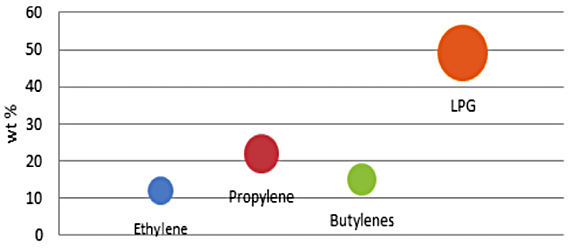 |
Demonstration Unit
The technology has been demonstrated by setting up a unit of 100,000 tonnes per year capacity at Guwahati Refinery of Indian Oil in 2003. Since then, the unit is being operated in different modes with heavy feed CCR up to 4 wt% depending on the market demand[7]. The feedstock is a mixture of atmospheric tower bottom (ATB) and
coker heavy gas oil (CHGO). In addition, coker naphtha (CN) is injected into the same riser reactor. The composition of the feedstock is summarised in Tab. 2[5]:
| Table 2 - Feestock Types and Properties |
| Feed composition |
Atmospheric Tower Bottom (ATB)
Coker Heavy Gasoil (CHGO)
Coker Naphtha (CN) |
50%
30%
20% |
| Feed density |
ATB + CHGO
Coker Naphtha |
0.9456
0.7164 |
| CCR |
ATB + CHGO |
3.75 wt% |
The unit operates in complete combustion without a catalyst cooler, which demonstrates the delta coke selectivity — it produces less delta coke — of the Indmax catalyst. A number of test runs performed in this unit achieved high conversion and a propylene yield of 17.2 wt% of the total feed[5].
Licensing
Currently, INDMAX technology is being licensed worldwide by Lummus Technology LLC in collaboration with Indian Oil[3].
References
- Upadhyay, et al, Jan 2005, Successful demonstration of Indmax process for conversion of residues to LPG and high octane gasoline, Petrotech 2005, New Delhi.
- Gopal Ravichadran et al., US7517827B2, Priority Date: 17th Aug 2006, Process for preparation of liquefied petroleum gas selective cracking catalyst, Assigned to: Indian Oil Corporation Ltd., Status: Active, Antipated Expiration: 17th Aug 2026.
- Indian Oil, 24th Aug 2021, INDMAX Technology.
- Lummus Technology, Indmax FCC. (Accessed 1st Feb 2024)
- Dalip Sony et al., 2009, Catalytic cracking process enhances production of olefins, Digital Refining.
- Mc Dermott Technology, 21st Mar 2019, Indmax Fluid Catalytic Cracking for Maximum Olefins, Document retrieved via the Web Archive / Cheminfo.
- Lummus Technology Inc., INDMAX Technology: Production of Light olefins/ LPG & High OctaneGasoline from Petroleum Residue, retrieved via SCRIBD, Document uploaded: 7th Aug 2020.
